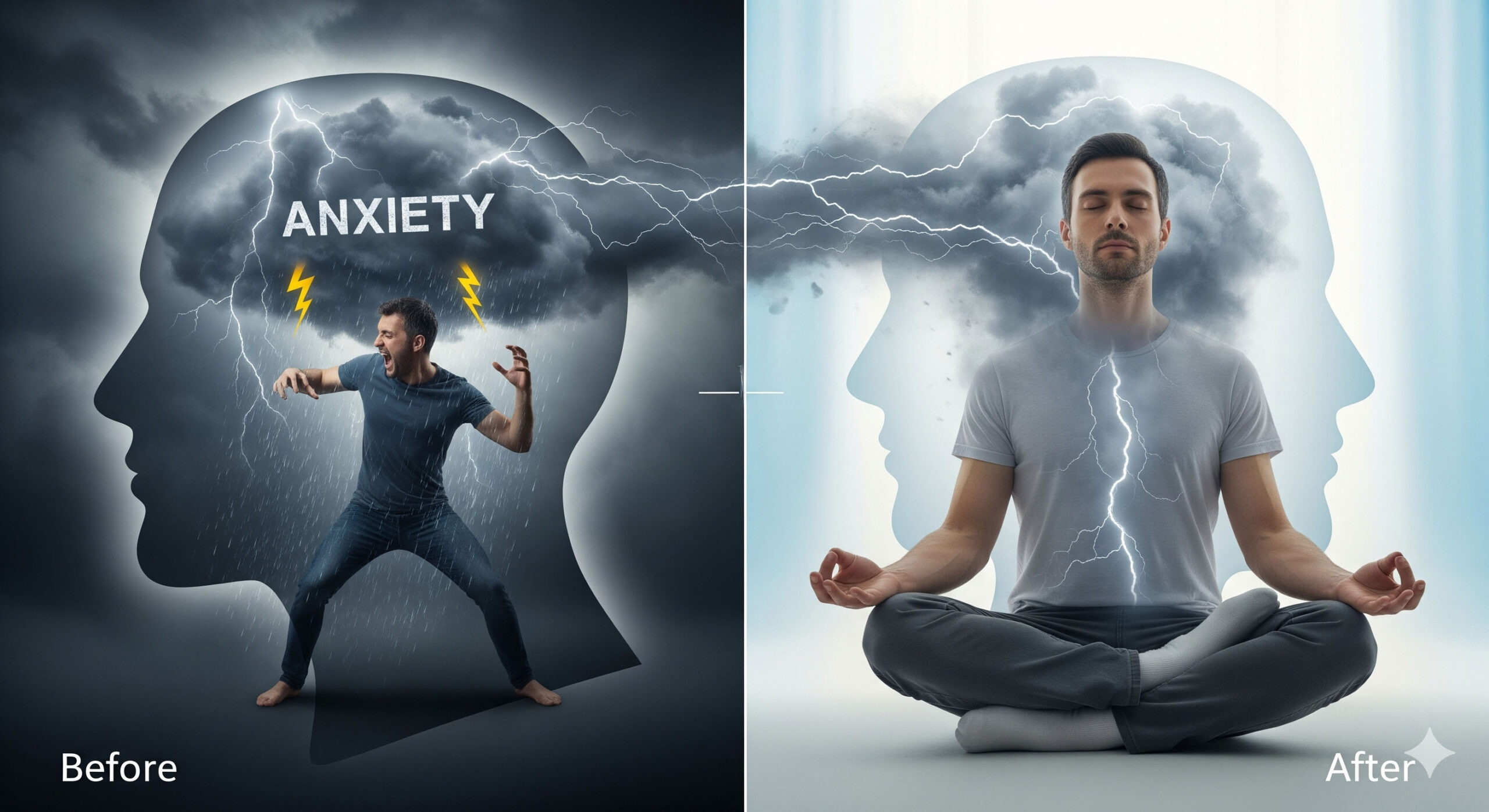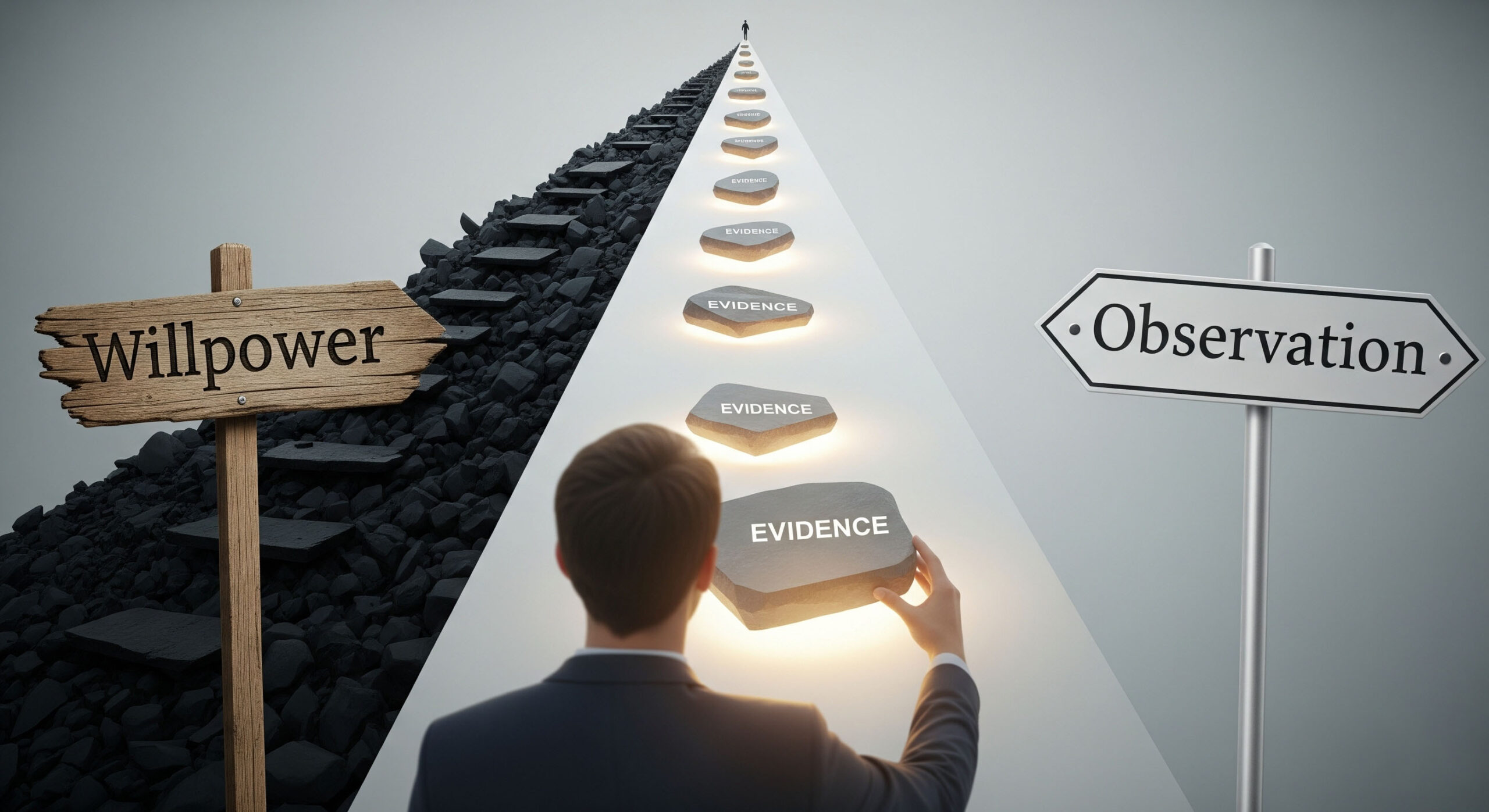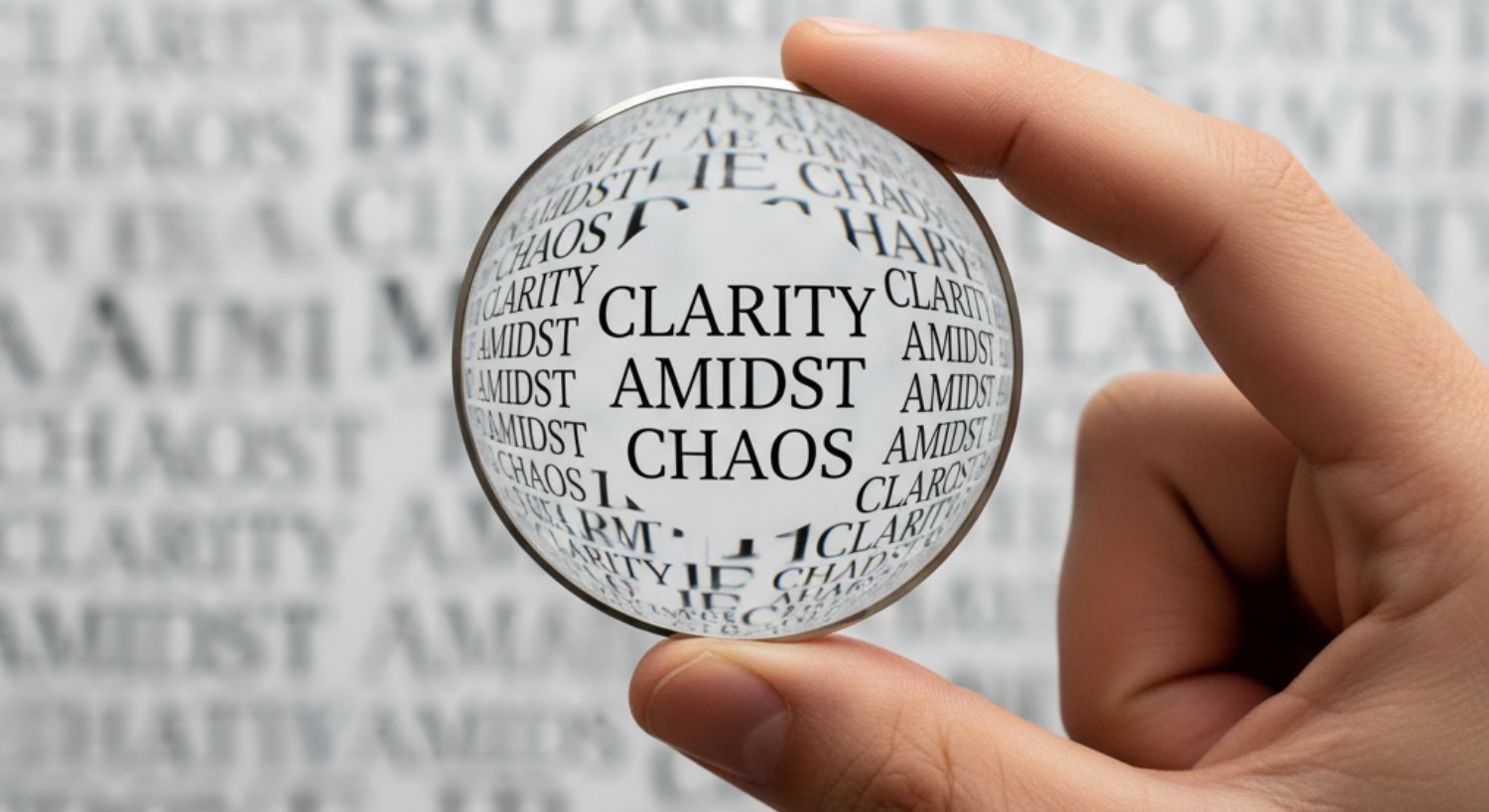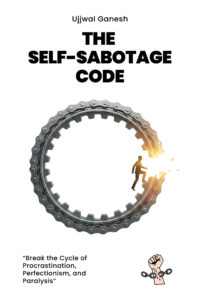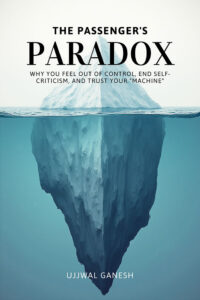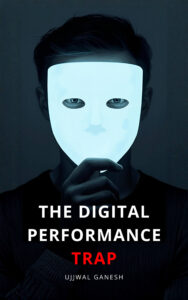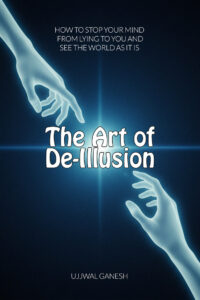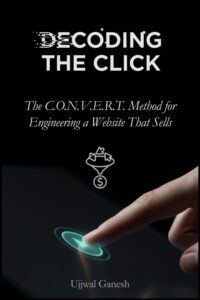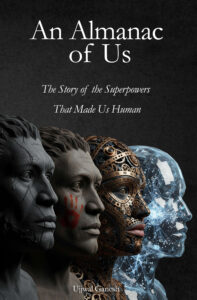For most of us, to be human is to be at war with ourselves.
We spend our days engaged in a constant, exhausting, and deeply personal battle fought entirely inside our own heads. We fight our anxiety, we struggle with our anger, we try to suppress our sadness and wrestle our distracting thoughts into submission. This inner conflict is the background noise of our lives, a silent war where we are both the soldier and the enemy, and where victory never seems to last.
But what if this entire war is based on a lie? What if the struggle itself is built on a fundamental illusion about who we are?
An ancient secret, echoed by philosophers like Jiddu Krishnamurti and validated by modern psychology, suggests that the path to inner peace is not found by winning the war, but by realizing it was never real in the first place. The secret is this: the observer is the observed.
The Illusion That Creates the War
To understand this profound idea, we must first see the illusion that creates our inner conflict. The moment a strong feeling like anxiety arises, what happens in your mind? You instinctively create a division.
You say, “I am anxious.”
In that simple statement, you’ve split your reality in two. There is the “I“—the observer, the thinker, the entity you think of as your central self, the one who is in control. And then there is the “anxiety“—the thing being observed, the unwelcome feeling, the foreign invader that is happening to you.
The moment this division is created, the war begins. The “I” immediately starts to work on the “anxiety.” It judges it (“I shouldn’t feel this way”), analyzes it (“Why am I so anxious?”), and desperately tries to suppress or control it. This friction between the supposed “thinker” and the “thought,” the “feeler” and the “feeling,” is the source of all our inner turmoil.
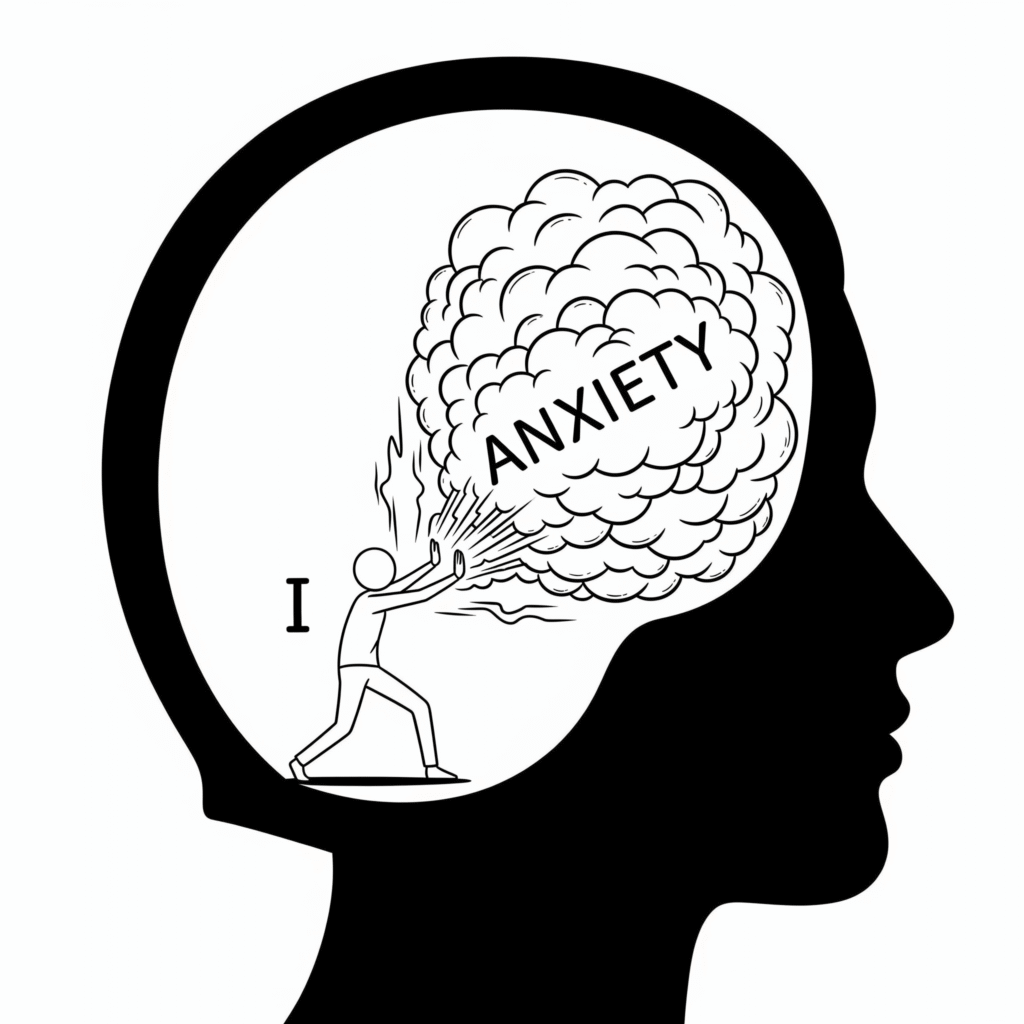
The Great Realization That Ends the War
Krishnamurti’s radical insight, which I explore as the final step in my book, The Observation Effect, is that this separation is a complete illusion.
There is no “you” that is separate from your anxiety. There is no thinker separate from the thought. When the experience of anxiety is present, you are not a person feeling anxiety. In that moment, you are the holistic, unified, and total experience of anxiety itself. The observer is the observed.
When this realization lands—not just as a clever intellectual idea, but as a deep, felt truth—the internal battle simply ceases to exist. There is no one left to fight. The energy that was previously wasted on the friction of judging, controlling, and suppressing is suddenly liberated. The war is over because the two opposing armies have realized they were always on the same side.
This isn’t just philosophy; it is the exact principle behind the modern, scientifically-validated practice of mindfulness. Psychologists refer to this perceptual shift as “cognitive defusion” or “de-centering.” It is the ability to see your thoughts and feelings for what they are: transient mental events passing through awareness, rather than literal truths or defining aspects of a solid, separate “self.”
A Practical Guide to Dissolving the Observer
This is not a “trick” you can learn or a “hack” you can implement. It is a new way of seeing. The following are not tools to fix yourself, but practices to help you see the illusion more clearly.
Practice #1: Change Your Inner Language
Language shapes reality. The phrase “I am anxious” creates a powerful, fused identity. To begin dissolving this, practice a subtle but profound linguistic shift.
- Instead of saying: “I am angry.”
- Try noticing: “There is anger here.” or “I am noticing the sensation of anger in my body.”
This small change in phrasing begins to break the unconscious identification. It moves you from “I AM this feeling” to “I am the AWARENESS in which this feeling is happening.” It creates a space for observation without creating a “fighter.”
Practice #2: The “Welcome and Witness” Meditation
The next time a difficult emotion arises, instead of your default reaction (suppressing or getting lost in it), try this meditation for a few minutes.
- Welcome the Feeling: Find a quiet place to sit. Close your eyes. When the feeling of anxiety or anger arises, instead of pushing it away, silently say to it, “Welcome. I see you’re here.” You are treating it not as an enemy, but as a visitor.
- Witness the Physical Sensations: Drop the story about why you are anxious. Let go of the thoughts, the reasons, the justifications. Instead, bring your full, curious attention to the raw, physical sensations of the emotion in your body. Where is it? Is it a tightness in your chest? A heat in your face? A vibration in your hands?
- Observe Without Judgment: Simply watch these physical sensations as you would watch clouds moving across the sky. Notice how they change, intensify, and eventually, dissipate on their own when they are not fueled by the story from the “I.”
Practice #3: Ask the Unanswerable Question
This is a more advanced practice of self-inquiry. When you are lost in a storm of thoughts, pause and gently ask yourself one question:
“Who is it that is aware of this thought?”
Don’t try to answer it with your intellect. The point is not the answer. The act of asking the question itself can short-circuit the illusion. It snaps your attention away from being identified with the thought and brings it back to the vast, silent awareness in which the thought is appearing. You realize you are not the thought; you are the space in which the thought happens.
The End of the War is Peace
The ultimate goal of observation is not to become a master controller of your mind. The ultimate goal is to observe so deeply and so completely that you realize there is no controller at all.
The path to inner peace is not paved with more discipline, more willpower, or better fighting strategies. It is found in this final, liberating act of observation: seeing with total clarity that the observer and the observed are, and always have been, one and the same.
This is the final destination of the journey we began in my book, The Observation Effect. It is a journey that starts with learning to see the world more clearly and ends with learning to see ourselves so clearly that the conflicted “self” we thought we had to fix simply dissolves into the peace of the present moment.
